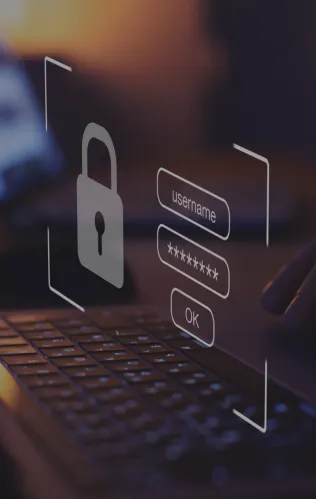The COVID-19 pandemic has caused almost every industry across the business landscape to shift immeasurably. However, few had to shift to such a drastic extent as the education sector, moving teachers and students to a fully virtual capacity almost overnight, with little infrastructure initially in place to support them. Whilst face-to-face education has largely returned for many schools, we’re now seeing the growth and continuation of a hybrid-learning strategy, especially in upper education levels.
Many businesses can pivot with relative ease into the ‘working from home’ mode, but education is a different kettle of fish entirely – schooling has never been home-based before, so there was absolutely no preparation in place for when the COVID-19 pandemic hit. Educators are far more prepared for every eventuality now – once bitten twice shy has never been more apt – and the introduction of Student Information Systems has given education authorities the peace of mind that their facility is prepared to deal with everything and anything.

Hybrid Learning: The Big Bang
Pre-2019, hybrid learning wasn’t really a ‘thing’, and certainly wasn’t on a school or educator’s agenda. Big businesses were beginning to incorporate hybrid working out of social responsibility alone, but hybrid learning was never even a consideration for educators across the globe before the pandemic. Learning has always taken place in person, especially for youths, and the education sector has no plans to change – digital tools remain a ‘nice to have’ as opposed to a sector essential technology.
In steps COVID-19, the biggest black swan event in many of our living memories. Within the swift turnaround of a few short days, many schools went from being aware of a potentially impending problem, to shutting their doors and beginning the unknown journey into ‘learning-from-home’. This home-learning continued for weeks and months in the UK alone, forcing teachers and schools to vastly adapt the way that they teach, moderate, and ultimately continue to grow their students in a virtual capacity.
Hybrid learning consists of a mix of face-to-face and virtual education and can be conducted in a fully COVID-safe manner. However, as a completely unprecedented approach to education, the idea of hybrid and blended learning has left some educational facilities at a loose end, struggling to implement conflicting methods for virtual and in-person teaching at the same time.
Drawing hybrid and in-person learning under one roof mean that education providers can ensure their offerings are compatible and simple to operate so that teachers can offer a seamless learning environment. Hybrid learning is a long-term solution, and so the quicker that educational facilities can adopt a reliable and seamless system, the better.
Return of the SIS – A Benefit to Both Students and Teachers Alike
As part of a hybrid learning offering, many educational institutions are introducing Student Information Systems or SIS for short. An SIS is designed to allow an educational institution to manage all student data under roof and is imperative to the smooth operation of a hybrid learning offering. Its ease of management and enhanced clarity make data and information accessible school-wide, right from teachers and the upper hierarchy to parents and students alike.
The introduction of an effective SIS allows educational facilities to incorporate all of their hybrid learning offerings, providing a platform for teachers, students, parents, and staff to use together.
However, as well as allowing all hybrid learning arms to be drawn under on roof, implementing an SIS in addition to the traditional Learning Management System (LMS) enables education providers to present a truly hybrid learning environment, including synchronous and asynchronous offerings – such as ensuring Zoom is compatible with your other educational needs. Simply relying on LMS limits what you can offer and doesn’t truly integrate every offering under one roof. Not only this, but it can also actually expose educational systems to gaping holes that don’t allow users to effectively manage your online education system – worsened by if you’re trying to manage a hybrid one.
The biggest challenge that the Coronavirus pandemic threw up was the isolation from others – changing the ways in which we interact and learn from others. Where we would be used to simply meeting and interacting with others, we had to adjust to meet in a virtual sphere and had to find ways to make sure everything we needed was in one place. That’s where an SIS comes into the education sector – a platform to ensure that all your educational needs are housed under one roof in the most compatible way. For teachers and students alike, ensuring everything is in one place is vital to successful hybrid learning, whether this includes registrations, lesson planning, additional resources, or even student data. Similarly, being able to access this information from anywhere is also a vital addition to hybrid learning.
It’s vital that any educational facility looking to implement a hybrid learning system, or even consider it as a contingency, must have an effective SIS and LMS up and running, working simultaneously to offer the best synchronous activity. There are plenty of different types of SIS available to education providers, all offering their own niches and quirks, so making sure you pick the right system for you is just as imperative, as only the right system for you will allow you to make the most out of it.
Quick Unplanned Arrival – No Planned Departure
Hybrid learning made an almost explosive entrance into the educational sphere. Its arrival was unplanned, unprecedented, and there was little preparation in place for its impact. Schools and education providers had to pivot quickly, mobilizing their home learning offers almost overnight.
However, for most technologies that are implemented to deal with an unprecedented event, they normally lose their effectiveness somewhat when the event is over, and they are almost rendered redundant. Essentially, life returns to normal, and technology is now not necessary.
This isn’t expected to be the case for hybrid learning. Whilst there’s absolutely no doubt that the amount of hybrid learning on offer will decrease, it will still be factored into education planning and even facilities that continue to build their educational offerings in a hybrid environment. Schools have made it very clear that they’re looking forward to introducing face-to-face learning again as soon as possible, but it should be expected that hybrid learning won’t go far from the periphery of educational offerings and will eventually be morphed into the standard technologies and ideologies that schools and other educational providers naturally consider when building out contingency plans, or expanding their offerings to students.
We should expect hybrid learning to not only play a role in our own education right now, during COVID but also as we move forward into our ‘new normal. It’s ultimately going to affect the way not only we learn, but also our children, and perhaps even their children. As with any new technology, SIS’ and hybrid learning will eventually fade into the background and work seamlessly without us even realizing it. But for now, it’s at the forefront of education as classrooms look to make their long-awaited return to face-to-face learning.
Classter SIS and the Hybrid Education Environment
Classter is a cloud-based (MS Azure), modular SIS and LMS system that aims to create a hybrid classroom environment that educational organizations can use out of the box.
Its advanced functionality helps educational institutions of any type manage remotely all their operational processes.
Online Admissions: This module offers the ability to use an online admissions portal for applications and consents management. Admins can manage and keep track of all the steps during the application process, from the sign-up to the acceptance of an applicant.
Day-to-day school management: Admins can manage student, teacher, parent, and school data centrally, in a system that serves as the single source of truth.
Online Billing: The accounting department can manage financial processes and receive online payments through a large selection of 3rd-party payment gateways.
Going beyond operations, creating a hybrid educational environment requires the implementation of distance synchronous and asynchronous learning tools.
Classter offers out-of-the-box integrations with the most popular platforms in the educational sphere. These integrations create a powerful distance learning infrastructure, with Classter operating as the backbone that allows educational organizations to switch easily between physical and distance learning.
Note: this article from our CEO Nikolaos Nikou, was originally published in Global Banking & Finance Review on 13.07.2021
FAQ’s
SIS play a crucial role in hybrid learning by centralizing student data, facilitating communication between stakeholders, and ensuring seamless operation of educational processes both in-person and virtually.
Classter offers a cloud-based, modular system that seamlessly integrates student data management, online admissions, day-to-day school operations, and online billing. Its advanced functionality and out-of-the-box integrations make it a versatile solution for educational organizations of any size.
Classter empowers administrators to manage student, teacher, parent, and school data centrally, serving as the single source of truth for all operational processes.






